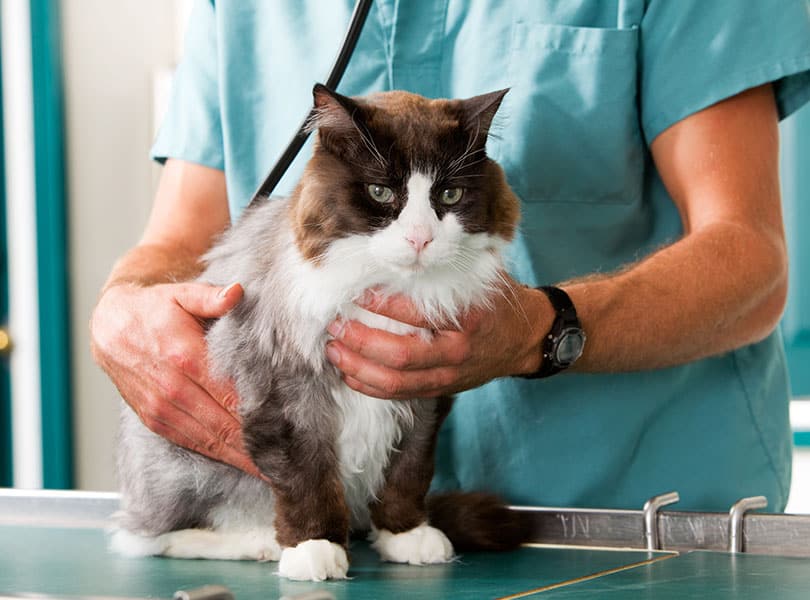What You Need to Find Out About Vet Providers: An Overview of Diagnostic Devices and Procedures
Veterinary solutions play an important duty in preserving the wellness of pet dogs. Regular examinations can expose concealed wellness problems at an early stage. Different analysis devices and procedures, such as blood tests and imaging strategies, offer necessary insights right into an animal's wellness. Recognizing these approaches is key for pet proprietors. What specific diagnostic procedures are most frequently made use of, and exactly how can they impact a pet dog's treatment plan?
Value of Normal Vet Examinations
While several animal owners may take too lightly the relevance of regular veterinary examinations, these consultations are essential for preserving a pet's total health. Routine check outs to the vet allow for early discovery of possible health issues before they escalate into major issues. Routine examinations usually consist of vaccinations, which are essential for avoiding infectious diseases that could significantly impact an animal's well-being. Additionally, these appointments provide an opportunity for vets to analyze the pet's weight, oral health and wellness, and overall condition, making sure that the family pet is prospering. Throughout these sees, animal proprietors can additionally obtain useful recommendations on diet plan, exercise, and preventive treatment customized to their particular family pet's needs.
Common Diagnostic Treatments in Vet Medication
In vet medicine, precise diagnosis is vital for effective therapy. Typical diagnostic treatments consist of blood testing strategies, progressed imaging technologies, and urinalysis, each playing a significant duty in determining health concerns. Comprehending these methods boosts the capability to offer suitable take care of animal people.
Blood Checking Techniques
Blood screening methods act as crucial diagnostic devices in veterinary medication, making it possible for veterinarians to assess the health and wellness of pets accurately. These methods involve gathering blood samples to examine different components, such as white and red blood cells, platelets, and biochemical markers. Usual tests consist of complete blood matters (CBC), which review general wellness and spot infections, and biochemical panels, which assess organ feature and metabolic status. In addition, serological examinations can identify certain conditions with antibody detection. Blood screening is minimally intrusive and offers critical information that helps in detecting conditions, keeping an eye on health and wellness condition, and reviewing reactions to treatments. In general, these techniques play an important duty in making certain ideal care for animals and animals alike.
Imaging Technologies Utilized
Analysis imaging innovations are crucial tools in vet medication, enhancing blood screening techniques by providing aesthetic insights right into an animal's inner structures. Usual imaging modalities consist of X-rays, which are useful for assessing bone cracks and finding international items, and ultrasound, which permits real-time visualization of soft cells and body organs. Magnetic vibration imaging (MRI) supplies detailed photos of complex anatomical locations, specifically in neurological assessments. Computed tomography (CT) gives cross-sectional photos, boosting diagnostic accuracy for various conditions. Each of these technologies aids vets in detecting ailments, intending treatments, and keeping track of healing. By integrating imaging innovations, veterinary specialists can much better analyze a pet's health and make informed choices regarding their care.
Urinalysis and Diagnostics
Urinalysis acts as an essential diagnostic tool in vet medicine, providing beneficial insights into a pet's overall wellness and helping in the detection of numerous conditions. This non-invasive treatment assesses urine examples to examine kidney function, hydration standing, and metabolic disorders. Usual elements taken a look at include details gravity, pH levels, sugar, proteins, and the presence of blood or germs. Unusual searchings for can show issues such as urinary system tract infections, diabetic issues mellitus, or kidney illness. To boost diagnostic precision, urinalysis is frequently performed combined with various other tests, such as blood job and imaging studies. Early detection via urinalysis can result in prompt treatments, enhancing the diagnosis for many veterinary people. It is an essential facet of thorough veterinary treatment.
Understanding Blood Tests and Research Laboratory Analysis
Comprehending blood examinations and research laboratory analysis is crucial in vet medicine as it aids in detecting different health and wellness problems in pets. Different sorts of blood tests supply important info concerning a pet's internal state, while translating lab results requires cautious consideration of many variables. This area will certainly discover the kinds of blood tests available and the importance of their results.
Types of Blood Tests
Blood tests play a crucial function in vet medication, supplying crucial understandings right into a pet's wellness condition. Different sorts of blood tests are utilized, each serving different purposes. Complete blood matters (CBC) analyze total wellness and identify problems such as anemia or infection. Biochemical accounts examine body organ function by measuring enzymes and electrolytes, using insights into metabolic health and wellness. Serological tests identify specific antibodies or pathogens, assisting in the medical diagnosis of infections or autoimmune illness. Blood inputting guarantees secure transfusions, while coagulation examinations assess the blood's capability to clot, important for procedures. These tests collectively boost medical diagnosis, therapy planning, and surveillance of an animal's health and wellness, illustrating the significance of comprehensive research laboratory analysis in vet care.

Translating Laboratory Results
A comprehensive analysis of lab results is important for exact diagnosis and treatment in veterinary medicine. Translating laboratory results calls for an understanding of normal recommendation arrays and the importance of variances. Blood examinations can disclose numerous wellness indications, such as body organ feature, electrolyte equilibrium, and the visibility of infections. Vets must consider the entire scientific photo, including the animal's background, physical exam findings, and any signs presented. Variations in outcomes might develop from aspects such as age, breed, and underlying health and wellness conditions. Laboratory results need to not be watched in seclusion however rather as component of a comprehensive analysis method. Accurate analysis permits customized therapy strategies and much better results for veterinary people.
Imaging Techniques: X-rays, Ultrasounds, and Beyond
Imaging methods are necessary tools in veterinary medication, giving essential understandings into the health and health of pets. Among one of the most typically used approaches are X-rays and ultrasounds. X-rays are invaluable for picturing bone structures, aiding veterinarians recognize fractures, lumps, or foreign things. This technique is quick and non-invasive, making it perfect for immediate situations.Ultrasounds, on the other hand, use acoustic waves to produce images of soft cells and organs. This technique is specifically beneficial for taking a look at the heart, abdomen, and reproductive body organs, allowing vets to analyze problems like liquid build-up or organ abnormalities.Beyond X-rays and ultrasounds, progressed imaging strategies such as computed tomography (CT) and magnetic resonance imaging (MRI) are significantly utilized in veterinary technique. These methods use thorough cross-sectional images, improving the precision of diagnoses and treatment plans. CT Scans For Animals. Generally, imaging techniques play a necessary role in making certain effective veterinary care
The Function of Biopsies in Diagnosing Family Pet Health And Wellness Issues
Accuracy in detecting wellness issues in pet dogs frequently rests on the usage of biopsies, which offer clear-cut information about tissue irregularities. A biopsy includes the elimination of a little example of cells for exam under a microscopic lense, allowing veterinarians to recognize different problems, consisting of infections, growths, and inflammatory diseases. This diagnostic tool is vital for comparing deadly and benign developments, leading therapy choices, and examining the intensity of a condition.Biopsies can you can try this out be done making use of numerous strategies, such as needle aspiration, incisional biopsies, or excisional biopsies, depending upon the place and kind of cells included. The choice why not try here of technique might influence recuperation time and the quantity of cells collected. Inevitably, the details gleaned from a biopsy can bring about targeted treatments, enhancing outcomes for pets facing significant wellness difficulties. Veterinarians emphasize the relevance of this treatment in accomplishing exact medical diagnoses and efficient therapy strategies.
Advanced Diagnostic Equipment: Endoscopy and CT Scans

Advanced analysis tools, such as endoscopy and CT scans, play an important duty in contemporary veterinary medication, providing non-invasive approaches to imagine inner structures and detect numerous conditions in pet dogs. Endoscopy involves making use of an adaptable tube equipped with a cam, allowing veterinarians to check out the intestinal system and breathing system directly. This strategy can reveal irregularities such as lumps, foreign bodies, or inflammation, allowing targeted therapy plans.CT scans, on the other hand, utilize sophisticated imaging technology to develop comprehensive cross-sectional photos of the body (Ultrasound For Dogs). This method is particularly helpful for examining facility frameworks like the mind, spine, and joints. By offering high-resolution photos, CT scans help vets in identifying problems that may not be evident via typical radiography. With each other, these innovative devices boost analysis precision, boost therapy outcomes, and ultimately add to better overall pet health and wellness administration

Interpreting Test Outcomes: What Animal Owners Must Know
Recognizing test results can be a tough job for family pet owners, particularly after sophisticated treatments like endoscopy and CT scans have been executed. Analyzing these results calls for a grasp of medical terms and a clear understanding of what the findings suggest regarding the pet's health and wellness. Vets frequently supply descriptions, but the complexity of the results can still bring about confusion.Pet owners need to actively engage in conversations with their vets, asking inquiries to clarify any type of uncertainties. It is necessary to understand uncommon versus regular results and the implications for the family pet's therapy strategy. In addition, recognizing that some results may need additional screening or surveillance can assist owners stay informed concerning their pet dog's health journey. Eventually, a joint strategy in between pet dog owners and veterinary specialists cultivates far better wellness results and boosts the overall treatment experience for pets.
Frequently Asked Questions
Just how Do I Choose the Right Veterinary Facility for My Pet dog?
Picking the appropriate vet facility includes researching regional choices, assessing qualifications, seeing centers, and assessing team communications (CT Scans For Dogs). Prioritizing referrals from trusted sources can assist assure the most effective care and setting for a pet's health needs
What Should I Do if My Family Pet Refuses to visit the Veterinarian?
When an animal declines to visit the veterinarian, it's recommended to stay calm, usage treats or toys to entice them, and consider setting up a home see if anxiety continues. Patience and favorable reinforcement are crucial.
Exist Telehealth Options for Veterinary Services?
Telehealth alternatives for veterinary services are increasingly available, permitting pet proprietors to seek advice from with veterinarians remotely. These solutions allow discussions concerning health concerns, guidance on minor disorders, and follow-ups without needing to visit a facility.
How Frequently Should My Pet Have Oral Check-Ups?
The frequency of oral exams for pet dogs commonly depends upon their age and breed. Generally, veterinarians recommend annual dental evaluations, although look at this site some animals might call for even more frequent brows through to preserve suitable oral health.

What Are the Prices Connected With Veterinary Diagnostics?
The costs connected with vet diagnostics can differ commonly, commonly ranging from basic tests like blood job to sophisticated imaging techniques. Variables influencing expenses include the facility's area, equipment used, and particular tests required for every pet dog. Veterinary solutions play an important role in maintaining the health of animals. While numerous animal owners may ignore the importance of routine veterinary examinations, these visits are necessary for keeping a pet's total health and wellness. In addition, these consultations supply a possibility for veterinarians to analyze the pet's weight, oral wellness, and general condition, making certain that the pet dog is prospering. Precision in identifying health issues in pets typically hinges on the use of biopsies, which give clear-cut info about cells problems. Furthermore, recognizing that some outcomes might require additional screening or surveillance can help proprietors remain notified regarding their family pet's health and wellness journey.